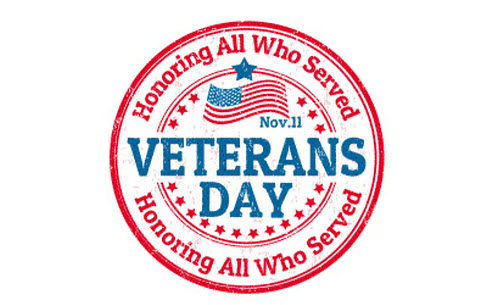Happy Veterans Day, readers, and here’s a look at the U.S. Department of Labor’s Office of Federal Contract Compliance Programs’ (OFCCP) new affirmative action requirements for veterans.
 |
Last August, the OFCCP announced a final rule that makes significant changes to the regulations implementing the Vietnam Era Veterans’ Readjustment Assistance Act, or VEVRAA. VEVRAA prohibits employment discrimination against specified categories of veterans by federal government contractors and subcontractors.
For a closer look at the new regulations and the implications for federal contractors we turned to BLR® Senior Legal Editor and affirmative action expert Susan Schoenfeld.
For about 40 years, Schoenfeld says, VEVRAA has required federal contractors and subcontractors to take affirmative action in recruiting, hiring, training, and promoting qualified veterans. However, the regulations never required covered contractors and subcontractors to conduct data analysis and set workforce goals or benchmarks, as they are required to do when undertaking affirmative action for women and minorities.
That all changed in August of this year, when the final VEVRAA rule was issued by the OFCCP. The new rule requires covered federal contractors and subcontractors to collect data and take new specific, action-oriented steps in order to comply with the final affirmative action requirements for veterans.
Hiring Benchmarks
First, and perhaps most important, the new VEVRAA rule establishes hiring “benchmarks” for protected veterans. Contractors may choose to either adopt a benchmark determined by the OFCCP that is based on the national percentage of veterans in the civilian labor force (currently 8%). Or, covered contractors may choose to set their own benchmarks, based on data derived from published reports issued by a variety of federal agencies, including the Bureau of Labor Statistics and the Veterans’ Employment and Training Service.
Find problems before the feds do. HR Audit Checklists ensures that you have a chance to fix problems before government agents or employees’ attorneys get a chance. Plus get a FREE special report. Download Now.
According to the OFCCP, unlike hiring goals, “benchmarks” serve only as a yardstick to measure the success of outreach efforts. The new rule asks contractors to set benchmarks rather than goals because the only data regarding veteran availability in the labor force encompasses all veterans, and is broader than the subset of veterans who are protected by VEVRAA. Therefore, the OFCCP says that such data could not be used as the basis for establishing an availability-based goal.
The final rule does not require contractors to apply their hiring benchmark to individual job groups, only to the workforce as a whole, by AAP establishment.
Data Collection
Second, the final rule requires contractors to undertake new data collection activities in order to bolster and improve upon the data available regarding veterans and employment.
Specifically, the final rule requires contractors to document and update annually certain comparisons and information regarding applicants and employees .
With respect to applicants, document and update:
- The number of protected veteran applicants;
- The total number of job openings and the number of jobs filled; and
- The total number of applicants for all jobs.
With respect to employees, document and update:
- The total number of protected veteran applicants hired; and
- The total number of applicants hired.
Self-Identification
The next significant change brought about by the new VEVRAA rule is designed to assist contractors in identifying covered veterans. When the new rule takes effect, applicants must be invited to self-identify as protected veterans at both the preoffer and postoffer stages of the application process. For preoffer identification, the final rule permits contractors to invite applicants to self-identify as a “protected veteran” at the same time that the contractor collects demographic data regarding race, gender, and ethnicity from applicants as required by Executive Order 11246.
The OFCCP has provided a self-identification form in the final regulations.
Using the “hope” system to avoid lawsuits? (As in: We “hope” we’re doing it right.) Be sure! Check out every facet of your HR program with BLR’s unique checklist-based audit program. Click here to get HR Audit Checklists + a FREE special report.
Data Assessment
Once all of the data have been collected, what does the new rule require that covered contractors and subcontractors do with it?
To determine whether the contractor’s outreach and recruitment efforts have been successful, the final rule requires that contractors annually assess their efforts and document this evaluation. The evaluation must include the criteria the contractor used to evaluate the effectiveness of each effort and the contractor´s conclusion as to whether each effort was effective.
The new rule does not spell out exactly how the assessment is to be done, but the current consensus is that contractors should apply the OFCCP’s 8percent benchmark figure to their data under the “any difference” rule.
If the contractor concludes that the totality of its efforts was not effective in identifying and recruiting qualified protected veterans, it must implement alternative outreach and recruitment methods. Contractors must retain their evaluations for 3 years, to allow them to assess the success of their efforts for veterans over time.
In tomorrow’s Advisor, more changes in veterans’ affirmative action requirement, plus an introduction to the best way to find problems before the feds do—the HR audit.

1 thought on “Happy Veterans Day—And Here Are the New AA Rules for Vets”